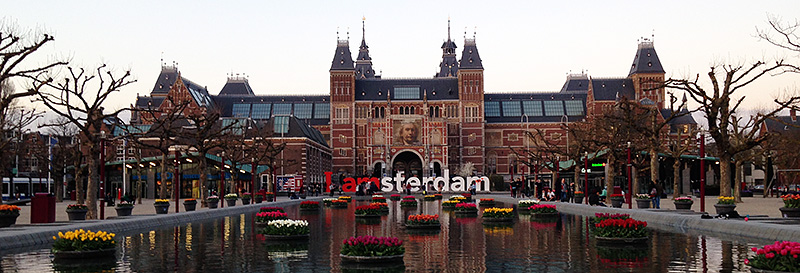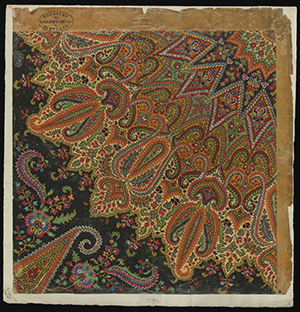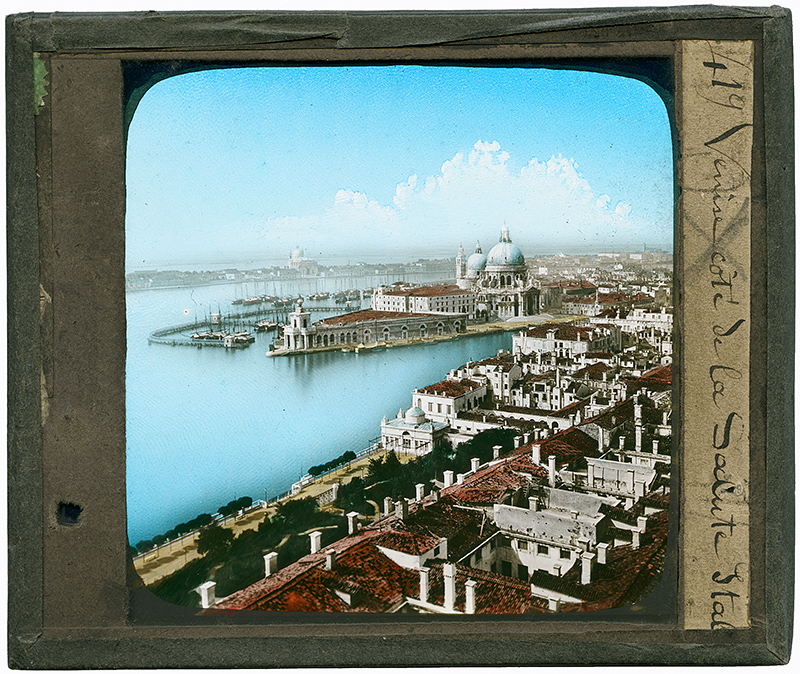I have spent the past 6 weeks digitising mosaic fragments here in the DIU. Recently removed from Tottenham Court Road Tube Station, London, these mosaics were once part of a…
Category: <span>Browse by Theme</span>
For the last couple of months I have had the pleasure of both volunteering with the DIU and now working a bit more seriously through my work placement as part…
Some time ago we digitised the hand coloured glass slides in the Cavaye collection, but we didn’t have time to do the much larger black and white part of the collection. So when our project photographer John Bryden, found a bit of spare time, we were delighted to have the remaining slides completed.
The whole collection is wonderful, apparently from a Grand Tour of Europe around the turn of the 20th century. I suspect that many of the slides were bought on the trip, much like we buy postcards today. Some of them were probably only lovingly hand tinted on return to Britain- in one of Palermo the tinting appears to be half finished.
In the studio, with a very limited access to backdrops and props, it can be difficult to enliven the more creative shots of objects. We are well set up now for standard record images against a neutral grey background and it is easy when you need to close in on the details of objects, however, these can start to look a bit ‘samey’ when you have lots of images to do for a project. This is the position I found myself in recently when working on the MIMED collection of musical instruments (see http://images.is.ed.ac.uk/luna/servlet/s/s4mynr). Thankfully, at the University we are blessed with some stunning locations to use instead, but with both of the obvious choices – St Cecilia’s Music Hall and the Reid Concert Hall – off limits for redevelopment, an alternative location required a bit of forethought and planning. Our colleagues at the Anatomy School very kindly agreed to let us use their beautiful Rowand Anderson designed building which provided sympathetic architectural details to arrange the instruments against and Malcolm and I decamped from the studio for 2 days to continue with the project.
The work that DIU are developing around moving image has grown considerably in the last two years and the demand for moving image has increased exponentially with each new film…
Last week saw the start of a new project- photographing many of the University’s Musical Instruments while they are in storage at the Library during the re-development of St. Cecilia’s…
 It is hard to believe that more than a month has passed since the fantastic “2 and 3D: Practice and Prophecies” Conference at the Rijksmuseum in April. So much was packed into those 2 short days: standardisation in colour and targets (who knew standards were so non-standard?), mass-digitisation and bespoke object specific photography techniques, panoramas, multispectral and 3D imaging, digital asset management and the role of photography in heritage institutions. This was a heritage photography event not to be missed, which is why I was delighted when the Association for Historical and Fine Art Photographers (AHFAP) offered me their competition bursary to attend. I gathered so much information in Amsterdam that I am still sifting through the notes and links and chasing up my post –conference ‘to do’ list! However, I would like to share a few of my highlights from the conference.
It is hard to believe that more than a month has passed since the fantastic “2 and 3D: Practice and Prophecies” Conference at the Rijksmuseum in April. So much was packed into those 2 short days: standardisation in colour and targets (who knew standards were so non-standard?), mass-digitisation and bespoke object specific photography techniques, panoramas, multispectral and 3D imaging, digital asset management and the role of photography in heritage institutions. This was a heritage photography event not to be missed, which is why I was delighted when the Association for Historical and Fine Art Photographers (AHFAP) offered me their competition bursary to attend. I gathered so much information in Amsterdam that I am still sifting through the notes and links and chasing up my post –conference ‘to do’ list! However, I would like to share a few of my highlights from the conference.
Over the course of digitising the Roslin Slide Collection, amongst all the slides of tables, charts and the like, it has been the images of people, and their animals, that have grabbed my attention most of all. I have noticed two particular styles of photographic composition that are common throughout; the group shot (still popular today of course!) and the ‘one man and his animal’ shot. These images provide a sort of typology where the composition often remains the same with the people and environment changing.
 As there were several separate requests recently for images from the splendid ‘Song School St Mary’ manuscript by Phoebe Anna Traquair, we decided the time was right to digitise the book from cover to cover, replacing some fairly mixed quality old digital images and preparing it for the LUNA Book Reader http://images.is.ed.ac.uk/luna/servlet/s/109unz . This item is one of my favourites (yes, I know I have many…), and it is a beautifully illuminated, vibrantly coloured, jewel-like treasure. Although made in 1897, Traquair created this on vellum, which adds to the impression of exquisite quality.
As there were several separate requests recently for images from the splendid ‘Song School St Mary’ manuscript by Phoebe Anna Traquair, we decided the time was right to digitise the book from cover to cover, replacing some fairly mixed quality old digital images and preparing it for the LUNA Book Reader http://images.is.ed.ac.uk/luna/servlet/s/109unz . This item is one of my favourites (yes, I know I have many…), and it is a beautifully illuminated, vibrantly coloured, jewel-like treasure. Although made in 1897, Traquair created this on vellum, which adds to the impression of exquisite quality.
Last week Mercator’s beautiful Atlas sive Cosmographicae found its way into the DIU, only after it arrived did we discover that it was actually his 503rd Birthday, a fact celebrated by google with a Google Doodle http://www.google.com/doodles/gerardus-mercators-503rd-birthday.




